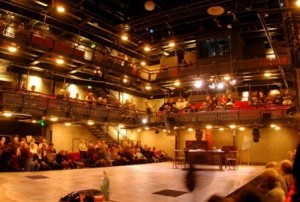Coventry, England
Mystery Plays were one of the major cultural developments of Europe in the Middle Ages, and one of the only forms of theater permitted by the Roman Catholic Church. Probably originating some time in the 13th or 14th centuries, Mystery Plays generally involved theatrical depictions of major Biblical events from both the Old and New Testaments. A related form of entertainment known as the Miracle Plays depicted the lives of post-Biblical saints, such as Nicholas.
The Mystery Play experienced a golden age of sorts in England during the 15th century. Many larger towns and cities, especially in Central England, saw the development of semi-professional theatrical guilds who around this time. In addition to other performances, these guilds were generally responsible for the production of regular Mystery Plays, in particular around the Easter and Christmas holidays. The best known surviving Mystery Plays of this period are those of the Chester, Wakefield and York. But the one most closely associated with Christmas are those of Coventry.
The Coventry Mystery Plays date back at least as far as the late 14th century. Of the original ten plays, only two have survived: the Shearman and Tailors Pageant and the Weaver’s Pageant. The former essentially tells the story of Christmas, and is best known for its depiction of the Massacre of the Innocents, which has been immortalized in what is known today as the Coventry Carol. The Coventry Carol is among the oldest Christmas carols and existence, and one of the most popular of all ancient Christmas songs.
The Coventry Mystery Plays were banned in the late 16th century, but were revived in 2000. They are now performed periodically by the players of the Belgrade Theater in central Coventry, approximately eighty-five miles northwest of London. It is not an annual performance, so those interested in seeing these famous plays performed in their native city should plan ahead. Web: www.belgrade.co.uk (official website of the Belgrade Theater)


Leave a Reply